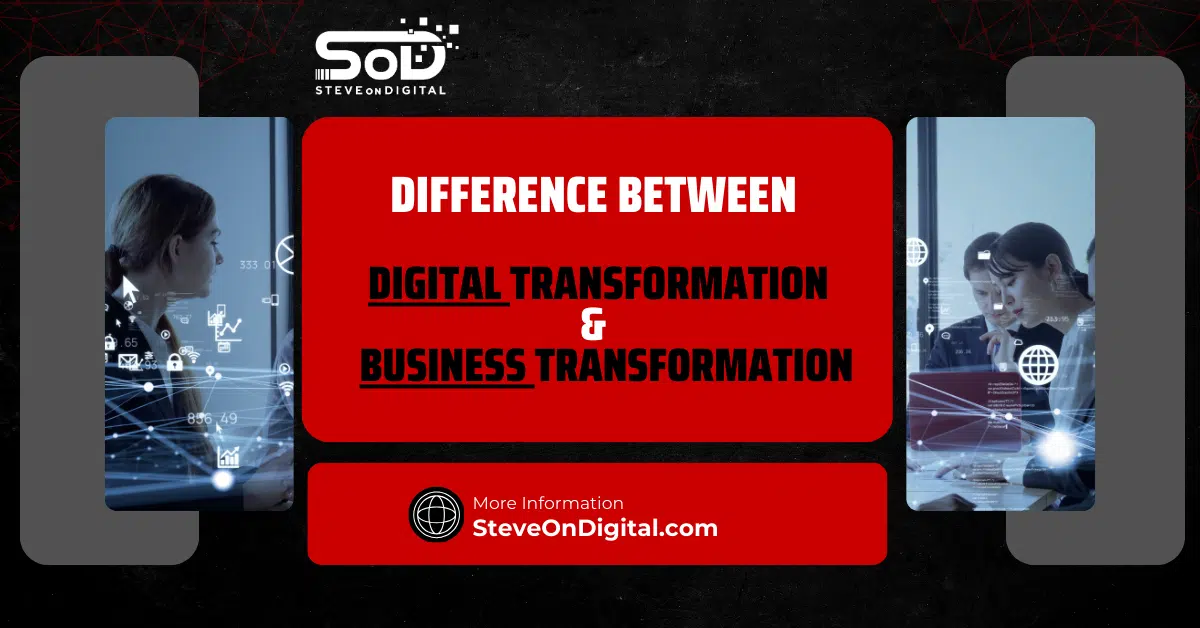Breaking down silos is essential for any organization aiming to improve collaboration and communication. Silos form when departments or teams operate independently, causing inefficiencies and missed opportunities. Addressing this issue can transform how a company operates, leading to better outcomes and increased productivity.
I’ve experienced firsthand how detrimental silos can be. They create barriers between teams, hindering the flow of information and collaboration. By breaking down these silos, I’ve seen how organizations can foster a more unified, efficient, and innovative environment that benefits everyone involved.
I’m Steve, a digital transformation expert with a strong background in electrical engineering, an MBA, and a master’s in Project Management. I excel at helping SMEs navigate the digital landscape with practical insights. Let’s begin!
Understanding Organizational Silos
Organizational silos are more than just physical barriers; they represent the divisions within a company that prevent the free flow of information, ideas, and collaboration. When I first started noticing silos within my own company, I realized how much they were holding us back. Silos can form for many reasons, but the end result is always the same: a fragmented organization where departments operate independently, often at the expense of the company’s overall goals.
Definition of Organizational Silos
Organizational silos occur when departments, teams, or even individuals within a company work in isolation from one another. This isolation can lead to a lack of communication, reduced collaboration, and ultimately, inefficiencies that hinder the organization’s ability to achieve its goals. In my experience, silos often develop subtly, as teams focus on their own objectives without considering the bigger picture. Before you know it, these silos have become entrenched, creating barriers that are difficult to break down.
Types of Organizational Silos
There are several types of organizational silos that can form within a company, each with its own unique challenges:
- Role-Based Silos: These silos form when different roles within the company fail to communicate effectively. For example, the sales team may not share critical customer feedback with the product development team, leading to products that don’t fully meet customer needs.
- Geography-Based Silos: In larger organizations with multiple offices or locations, geography-based silos can emerge. These silos occur when teams in different locations don’t share information or collaborate effectively, often because they believe their work is location-specific.
- Task-Based Silos: Task-based silos arise when departments or teams focus solely on their own tasks and fail to collaborate with others. This can lead to inefficiencies, as teams may duplicate efforts or miss out on valuable insights from other departments.
- Tool-Based Silos: Tool-based silos happen when different departments use incompatible tools or technologies, preventing them from sharing information or collaborating effectively. For example, the marketing and sales teams might use different CRM systems that don’t integrate, leading to missed opportunities for collaboration.
Common Causes of Silos in Organizations
Silos don’t just appear out of nowhere—they’re often the result of underlying issues within the organization. Based on my experience, here are some common causes of silos:
- Poor Communication: When teams don’t communicate regularly or effectively, it’s easy for silos to form. Regular communication is essential for keeping everyone on the same page and ensuring that information flows freely across the organization.
- Lack of a Unified Vision: Without a clear, unified vision, departments may focus on their own goals rather than the company’s overall objectives. This can lead to competing priorities and a lack of collaboration.
- Autonomous Departments: While autonomy can be beneficial, it can also lead to silos if departments become too focused on their own goals and lose sight of the bigger picture.
- Physical Barriers: In larger organizations, physical barriers such as different offices or locations can contribute to the formation of silos. When teams are physically separated, it’s more challenging to foster collaboration and communication.
The Impact of Silos on Business Performance
Silos can have a significant impact on business performance, often in ways that aren’t immediately obvious. When departments operate in isolation, they miss out on opportunities to share knowledge, collaborate on projects, and align their efforts with the company’s goals. Over time, these missed opportunities can add up, leading to reduced productivity, lower employee morale, and ultimately, a negative impact on the company’s bottom line.
Halted Data Flow
One of the most significant impacts of silos is the disruption of data flow within the organization. When departments don’t share critical information, it creates blind spots that can lead to poor decision-making. For example, if the marketing team isn’t aware of the latest product developments, they might launch a campaign that doesn’t align with the product’s features or benefits. This kind of misalignment can result in wasted resources and missed opportunities.
Unshared Resources and Duplicated Tasks
Another common issue that arises from silos is the duplication of tasks. When teams don’t communicate or share resources, they may end up working on the same projects or creating similar tools, leading to wasted time and effort. In my own experience, I’ve seen how unshared resources can create confusion and inefficiencies. For instance, if multiple departments are working on similar reports or tools without collaborating, they may produce redundant outputs that could have been avoided with better communication.
Competitive Mindset Among Departments
Silos can also foster a competitive mindset among departments, where teams see each other as rivals rather than collaborators. This “us versus them” mentality can be damaging to the organization’s culture and overall success. Instead of working together towards common goals, departments may hoard information, compete for resources, or undermine each other’s efforts. Over time, this competitive mindset can erode trust, reduce morale, and ultimately hinder the company’s ability to achieve its objectives.
Identifying Silos Within Your Organization
Before you can tackle the problem of organizational silos, you first need to recognize where they exist. In my experience, identifying silos within an organization is a bit like peeling an onion—there are often layers of issues that aren’t immediately visible. However, once you start to dig, the signs of a silo mentality become clear. Here’s how I approach it.
Recognizing Silo Mentality
Silo mentality is the enemy of collaboration. It’s the mindset where departments or teams operate in isolation, focusing on their own goals without considering how their actions affect other parts of the organization. I’ve noticed that when teams start using phrases like “that’s not our problem” or “we’ll handle it on our own,” it’s a red flag. This kind of mentality can severely hamper the flow of information and create barriers to effective teamwork.
From my own experience, recognizing silo mentality starts with listening. Pay attention to how your teams communicate, both in meetings and in their day-to-day interactions. Are they sharing information freely, or is there a reluctance to collaborate with other departments? This mindset often leads to a damaging silo mentality that can stifle innovation and progress.
Tools and Techniques for Identifying Silos
Once you suspect that silos are present, there are several tools and techniques you can use to confirm and pinpoint them. I’ve found that surveys and communication audits are particularly effective.
- Surveys: Use anonymous surveys to gather honest feedback from employees about the level of collaboration across the company. Ask questions about communication barriers, information sharing, and the willingness to work cross-functionally. The results can be eye-opening, revealing areas where silos are deeply entrenched.
- Communication Audits: A communication audit involves reviewing the flow of information within your organization. This includes looking at email chains, meeting notes, and collaboration platforms. In my experience, these audits often uncover bottlenecks where information is not being shared effectively between teams.
By using these tools, you can identify the specific areas where silos exist and begin to develop strategies to address them.
Strategies to Break Down Silos
Once you’ve identified the silos, it’s time to take action. Breaking down silos requires a concerted effort, but the results can be transformative. Here’s what I’ve found works best.
Cross-Functional Teams
One of the most effective ways to break down silos is by creating cross-functional teams. These teams bring together individuals from different departments to work on a common goal. In my business, cross-functional teamwork has been a game-changer. Not only does it encourage collaboration, but it also allows for the sharing of diverse perspectives, which leads to more innovative solutions.
Cross-functional teams are particularly useful for project work where input from multiple departments is crucial. For example, if you’re launching a new product, having representatives from sales, marketing, and development on the same team ensures that everyone is aligned and working towards the same objectives.
Cultivating a Unified Vision
A unified vision is essential for breaking down silos. When all departments are working towards the same overarching goals, it’s much easier to foster collaboration. I’ve found that regularly communicating this vision and how each team’s work contributes to it helps to keep everyone on the same page.
To cultivate a unified vision, start by setting clear expectations and goals that align with the company’s broader objectives. Then, communicate these expectations regularly and encourage departments to share their progress with each other. This not only helps to break down silos but also fosters a sense of shared purpose.
Encouraging Regular Communication
Regular communication is the lifeblood of any successful organization. It’s also a critical tool in breaking down silos. In my experience, encouraging regular communication between departments—whether through scheduled meetings, shared digital platforms, or informal check-ins—helps to keep everyone informed and engaged.
One technique that has worked well for me is implementing regular cross-departmental meetings where teams can share updates on their projects and discuss any challenges they’re facing. This not only helps to break down communication hierarchies but also encourages collaboration and problem-solving.
Leadership’s Role in Breaking Down Silos
Leadership plays a crucial role in breaking down silos. I’ve always believed that if you want to see change in your organization, it has to start at the top. A unified leadership team that models collaboration and open communication sets the tone for the entire company.
As a leader, I make it a point to regularly communicate with all departments and ensure that our leadership team is doing the same. By leading by example, we can foster a culture of collaboration that permeates throughout the organization.
Utilizing Technology to Break Down Silos
Technology can be a powerful ally in the fight against organizational silos. When used effectively, it can enhance information sharing and streamline collaboration. Here’s how I’ve leveraged technology in my own business to break down silos.
Implementing Collaboration Tools
Collaboration tools are essential for breaking down silos, especially in larger organizations or those with multiple offices. Tools like Slack, Microsoft Teams, or Trello can help facilitate communication and project management across departments. In my experience, these tools encourage collaboration by making it easy for teams to share information and work together on projects, regardless of their physical location.
For example, in my company, we use Slack for real-time communication and Trello for project management. These tools have significantly improved our ability to collaborate and have helped to break down the physical barriers that previously existed between our different offices.
Centralizing Data and Resources
Centralizing data and resources in a cloud-based system is another effective strategy for breaking down silos. When everyone has access to the same information, it becomes much easier to collaborate and avoid duplication of efforts. In my business, we’ve moved all of our critical information and resources to a centralized platform, which has made a huge difference in how we work together.
Centralizing data also makes it easier to track progress and ensure that everyone is aligned with the company’s goals. It’s a simple change, but one that can have a profound impact on the efficiency and effectiveness of your teams.
Training Employees on Collaborative Technologies
Finally, it’s not enough to simply implement new technologies—you also need to ensure that your employees know how to use them effectively. In my experience, training is key to maximizing the potential of collaborative technologies.
We regularly hold training sessions to help employees get the most out of our collaboration tools. These sessions are designed to be practical and hands-on, giving employees the skills they need to use the technology effectively in their day-to-day work. By investing in this training, we’ve been able to create a more collaborative and efficient work environment.
Case Studies: Success Stories in Breaking Down Silos
Breaking down silos is not just theory—it’s something that many organizations have successfully achieved, leading to remarkable transformations. Let me share a few real-world examples of how some companies have tackled this challenge head-on and the positive outcomes they’ve experienced.
Company-Wide Collaboration Initiative
One of the most effective examples I’ve come across is a mid-sized tech company that was struggling with departmental silos. Each department had its own goals and processes, and collaboration was nearly nonexistent. The company’s leadership recognized that these silos were stifling innovation and decided to implement a company-wide collaboration initiative.
They started by forming cross-functional teams that included members from different departments, including sales, marketing, and product development. These teams were tasked with working on specific projects that required input and expertise from multiple departments. To support this initiative, they also implemented new collaboration tools, including a centralized project management system and a company-wide communication platform.
The results were impressive. Not only did the initiative break down the barriers between departments, but it also led to a significant increase in innovation. The company saw a 20% increase in product launches within the first year, and employee satisfaction scores improved by 15%.
Unified Leadership Driving Change
In another case, a large financial services company faced significant challenges due to silos between its various divisions. The leadership team realized that the lack of collaboration was hindering the company’s ability to respond to market changes and meet customer needs.
The CEO decided to take a bold approach by restructuring the leadership team to include representatives from each division, creating a unified leadership team. This team met regularly to discuss the company’s strategic goals and ensure that all divisions were aligned and working towards the same objectives. They also emphasized the importance of a unified vision, making it clear that collaboration was a top priority for the company.
This change had a profound impact on the organization. The company was able to respond more quickly to market trends, improve customer satisfaction, and increase overall profitability. In fact, within two years, the company reported a 30% increase in revenue growth, which they attributed directly to the enhanced collaboration between divisions.
Challenges in Breaking Down Silos
While the success stories are inspiring, it’s important to acknowledge that breaking down silos is not without its challenges. I’ve encountered several common obstacles that organizations face when attempting to foster collaboration across departments.
Resistance to Change
One of the biggest challenges is resistance to change. People are often comfortable with the status quo and may be reluctant to adopt new ways of working. In my experience, this resistance can come from all levels of the organization, from frontline employees to senior management.
To overcome this, it’s crucial to communicate the benefits of breaking down silos clearly and consistently. I’ve found that providing examples of how collaboration can lead to better outcomes, both for the company and for employees, can help to alleviate some of this resistance. Additionally, involving employees in the change process—by seeking their input and addressing their concerns—can help to build buy-in and reduce resistance.
Managing Cross-Departmental Conflicts
Another challenge is managing conflicts that arise when different departments begin working more closely together. These conflicts can stem from differences in priorities, work styles, or even personality clashes. In my experience, these issues are almost inevitable, but they can be managed effectively with the right approach.
One strategy I’ve used is to establish clear communication channels and protocols for resolving conflicts. This might include regular meetings to discuss any issues that arise, as well as a designated mediator or conflict resolution team. Encouraging a culture of openness and respect is also key to ensuring that conflicts are addressed constructively, rather than becoming a barrier to collaboration.
Measuring the Success of Silo-Breaking Efforts
It’s important to track the success of your efforts to break down silos to ensure that you’re on the right path. I’ve found that using specific metrics and gathering feedback can provide valuable insights into what’s working and where there may be room for improvement.
Key Performance Indicators (KPIs)
When it comes to measuring success, identifying the right Key Performance Indicators (KPIs) is crucial. In my experience, the KPIs should be directly tied to the goals of your silo-breaking efforts. For example, if one of your goals is to improve communication between departments, you might track the number of cross-departmental meetings held each month, or the volume of collaborative projects completed.
Other KPIs might include employee satisfaction scores, project completion times, or even financial metrics like revenue growth or cost savings. The key is to choose KPIs that are meaningful and aligned with your overall objectives.
Employee Feedback and Engagement
Another critical component of measuring success is gathering feedback from employees. I’ve found that employee engagement surveys can be particularly useful in assessing the impact of your efforts to break down silos. These surveys can provide insights into how employees feel about the changes, whether they believe that collaboration has improved, and what additional steps might be needed to further enhance teamwork.
In addition to surveys, regular check-ins and open forums can provide opportunities for employees to share their thoughts and experiences. By actively seeking and acting on this feedback, you can ensure that your silo-breaking efforts are not only effective but also supported by those who are directly affected.
Final Thoughts
Breaking down silos is no small feat, but it’s a critical step towards building a more collaborative, innovative, and successful organization. From identifying where silos exist to implementing strategies for fostering collaboration, the journey requires commitment, persistence, and a willingness to embrace change.
I’ve seen firsthand the transformative impact that breaking down silos can have, both in my own business and in the companies I’ve worked with. It’s not just about improving communication—it’s about creating a unified vision that aligns everyone in the organization towards common goals. By doing so, we can unlock new opportunities for growth, innovation, and success.
So, whether you’re just starting to recognize the silos in your organization or you’re well on your way to breaking them down, I encourage you to keep pushing forward. The rewards are well worth the effort.




